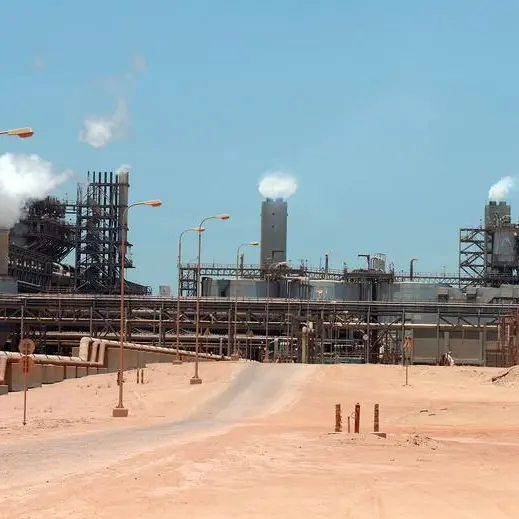Qatari banks have seen a pickup in private sector loans by 2.6% to QR6.4bn, mainly the services segment, and an overall credit of QR1.24tn, in August, shows a study by QNB Financial Services (QNBFS).
Loans are lower by 0.7% in 2023, compared to a growth of 3.3% in 2022. Loans grew by an average 6.7% over the past five years (2018-2022), QNBFS noted in its latest "Qatar monthly banking sector update".
Loan provisions to gross loans was at 3.9% in August, compared to 3.8% in July.
The overall loan book moved up 0.2% in August. Total Private sector loans went up by 0.4% month-on-month (MoM), which represents +0.8% (up to August in 2023).
The services segment was the main driver for the private sector loan increase. Services (contributes nearly 30% to private sector loans) increased by 2.6% MoM (+3.8% in 2023), while general trade (contributes nearly 21% to private sector loans) rose by 0.8% MoM (+1.8% in 2023) and consumption and others (contribute nearly 21% to private sector loans) moved up by 0.5% MoM (+3.8% in 2023).
However, the real estate segment (contributes nearly 21% to private sector loans) dropped by 3.2% MoM (-6.1% in 2023) in August 2023.
Total public sector loans increased by 0.1% MoM (-3.6% in 2023). The government segment (represents nearly 28% of public sector loans) went up by 1.5% MoM (-12.8% in 2023), while the semi-government institutions’ segment gained 3.9% MoM (3.7% in 2023).
However, the government institutions’ segment (represents nearly 67% of public sector loans) loan book declined by 0.7% MoM (+0.2% in 2023). Outside Qatar loans went down by 1.2% MoM (-3.0% in 2023) during August.
Total public sector loans increased by 0.1% MoM (-3.6% in 2023). The government segment (represents nearly 28% of public sector loans) went up by 1.5% MoM (-12.8% in 2023), while the semi-government institutions’ segment gained 3.9% MoM (3.7% in 2023).
However, the government institutions’ segment (represents nearly 67% of public sector loans) loan book declined by 0.7% MoM (+0.2% in 2023). Outside Qatar loans went down by 1.2% MoM (-3.0% in 2023) during August, QNBFS data reveal.
Non-resident deposits declined by 1.3% MoM (-7.8% in 2023) in August, causing the overall marginal drop in banking sector deposits for the month.
According to QNBFS, deposits went down marginally during August to QR927.7bn. Deposits decline in August was mainly due to a drop by 1.3% in non-resident deposits.
Deposits have declined by 7.1% in 2023, compared to a growth of 2.6% in 2022. Deposits grew by an average 4% over the past five years (2018-2022).
Public sector deposits moved up by 0.9% MoM (-12.7% in 2023) in August. Looking at segment details, the government institutions’ segment (represents nearly 59% of public sector deposits) pulled up the overall public sector with an increase by 2.9% MoM (-7.5% in 2023), while the government segment (represents nearly 26% of public sector deposits) went up by 1.2% MoM (-26.3% in 2023). However, the semi-government institutions’ segment declined by 6.9% MoM (-3.8% in 2023) in August.
Private sector deposits edged down by 0.1% MoM (-2.7% in 2023) in August. On the private sector front, the consumer segment declined by 1.3% MoM (+2.4% in 2023).
However, the companies and institutions’ segment increased by 1.4% MoM (-7.7% in 2023) during August.
Loans to deposits ratio went up during the month to 134.4% as at August.
Total assets increased 0.3% during August to reach QR1.874tn.
Total assets gain in August was mainly due to a rise by 0.5% in domestic assets.
Total assets are down by 1.6% in 2023, compared to a growth of 4.2% in 2022. Assets grew by an average 6.9% over the past five years (2018-2022)
Liquid assets to total assets was at 30.5% in August, compared to 30.7% in July, QNBFS noted.
Commenting on QNBFS data, an analyst told Gulf Times, “The highlight for August seems to be the pickup in loans for the private sector, mainly the services segment going up by 2.6% (QR6.4bn), which indicates good demand in restaurants and hotels and further strengthening of the tourism sector. Overall, marginal decline in the deposits was mainly due to a 1.3% drop in non-resident deposits. With local banks optimising on funding resources, there has been less reliance on expensive non-resident deposits.”
© Gulf Times Newspaper 2022 Provided by SyndiGate Media Inc. (Syndigate.info).




















